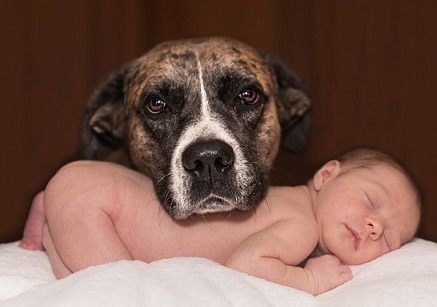
Owning a cat or dog might be a good thing when it comes to reducing the risk of childhood allergies and obesity, according to new findings from the Canadian Healthy Infant Longitudinal Development (CHILD) Study.
The research, published in the journal Microbiome and highlighted in Nature Outlook, found that babies exposed to furry pets in early life had higher levels of two bacteria that may protect against allergic disease and childhood obesity.
“The abundance of these microbes, which help to train a baby’s developing immune system, was increased two-fold in babies living with pets in the household,” says the study’s senior author, Dr. Anita Kozyrskyj, an AllerGen investigator and a professor in the Department of Pediatrics at the University of Alberta.
Pet exposure during early life affects infant gut microbiota
7 April 2017
Owning a cat or dog might be a good thing when it comes to reducing the risk of childhood allergies and obesity, according to new findings from the Canadian Healthy Infant Longitudinal Development (CHILD) Study.
The research, published in the journal Microbiome and highlighted in Nature Outlook, found that babies exposed to furry pets in early life had higher levels of two bacteria that may protect against allergic disease and childhood obesity.
“The abundance of these microbes, which help to train a baby’s developing immune system, was increased two-fold in babies living with pets in the household,” says the study’s senior author, Dr. Anita Kozyrskyj, a CHILD investigator and a professor in the Department of Pediatrics at the University of Alberta. “We also found that the presence of pets could reduce the chances of a mother passing on a Group B Streptococcus (strep) infection during birth, which can cause pneumonia in newborns.”
The bacteria can be passed from pets-to-moms-to-fetuses during pregnancy, and directly from pets to infants during the first three months of life, according to the researchers.
The team analyzed data from 746 children participating in the CHILD Study. DNA sequencing techniques performed in the laboratories of Drs James Scott and David Guttman at the University of Toronto provided information on the types and quantity of bacteria present in the infants’ stool. Information on pet ownership was reported by mothers during pregnancy and when infants were three months old.
Almost half (46.8%) of the children lived in households containing furry pets both during pregnancy and in the postnatal period; 45.2% lived in households with no pets; and 8% lived in households that contained pets only during pregnancy.
“Our findings build on a significant body of evidence that pet exposure can reduce allergic diseases such as asthma,” says the study’s lead author Dr. Hein Min Tun, an Alberta Innovates Health Solutions (AIHS) postdoctoral fellow at the University of Alberta. “Ultimately, we hope this research will contribute to new ways of modifying the gut microbiota that can be used to prevent or treat allergies and childhood obesity.”
